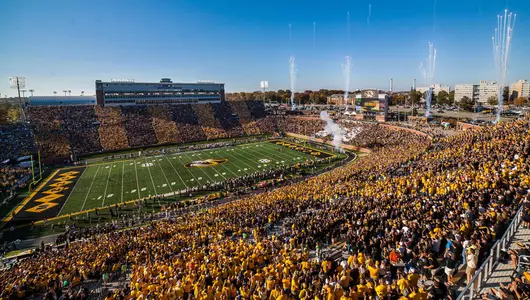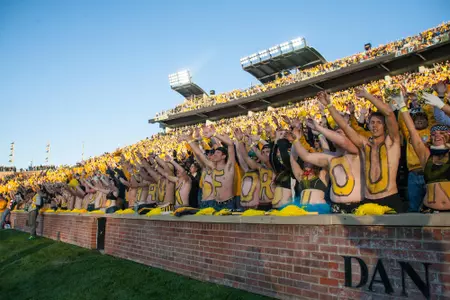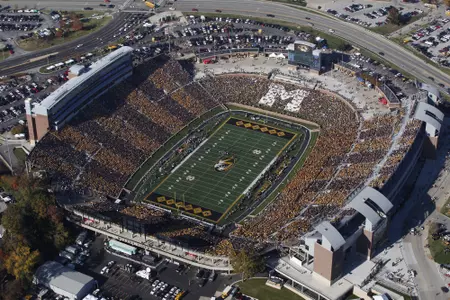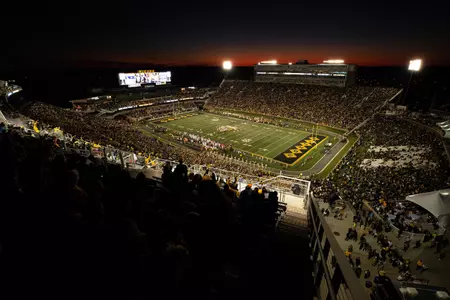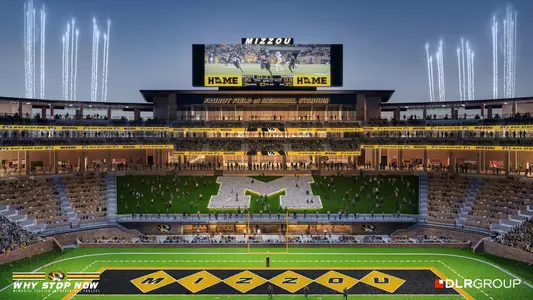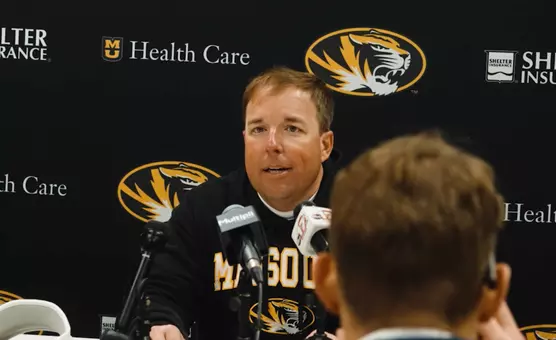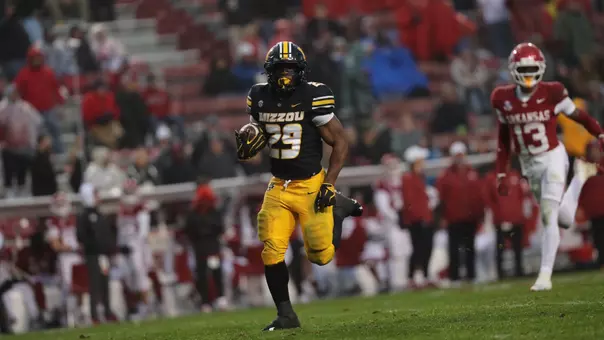Memorial Stadium/Faurot Field is stepping into its second century with the launch of the Memorial Stadium Centennial Project. Announced in 2025 to commemorate the stadium’s 100th anniversary, the project broke ground on a sweeping renovation of the north end zone and surrounding concourses. The upgrades will expand fan amenities with modern concessions, restrooms and gathering spaces, while introducing new premium seating and hospitality options. At the same time, the project will preserve the stadium’s unique history and traditions, ensuring that Memorial Stadium remains both a beloved landmark and a premier SEC venue for generations to come.
The Centennial Project builds on a long legacy of growth and modernization. The storied history of Memorial Stadium combines the best of old and new. Opened in 1926, the stadium has seen tremendous change over the decades, but Tiger fans are proud of the traditional feel and atmosphere that make game day in Columbia one of college football’s most distinct experiences.
The 2019 season saw the debut of perhaps the most significant addition ever added to the stadium’s skyline – the new South End Zone complex. The $98 million facility houses the every-day operations of the football program and provides numerous new amenities for fans, highlighted by a massive videoboard that spans the width of the building. Multiple private club levels and 16 luxury suites are available for donors, as well as improved seating, concessions and restrooms for the public. Capacity at the stadium increased to approximately 61,620 when the facility opened on September 7, 2019.
Debuting in 2014 was a spacious new upper deck (the Tiger Deck) and the Walsworth Family Columns Club, which features 1,200 luxury seats and top-notch amenities. The Tiger Deck provides 4,200 seats along with expanded public facilities, further enhancing the fan experience. Eye-catching ribbon boards, providing real-time stats, out-of-town scores and other information, were installed on the facades of both the east and west structures prior to the 2014 season.
Fans saw many changes for 2013, including a newly renovated west press box/luxury suite tower, as well as a change to the historical hill beyond the north end zone. The hill was moved closer to the field to allow for an expansion of the north concourse area – providing much more space for fans to congregate during games. The historic Rock M was broken down and stored safely during the summer and then rebuilt with the same rocks to maintain the cherished landmark that Tiger fans have loved for generations.
Prior to the 2012 season, a sparkling brand-new FieldTurf surface was installed on Faurot Field, commemorating Mizzou’s first year in the Southeastern Conference and reflecting a new graphic identity partnership with Nike.
An exciting new addition to the game-day atmosphere was unveiled prior to the 2009 home opener, when a high-definition videoboard debuted. With a video display spanning 80-feet by 31 1/2 feet, the new board and sound system transformed the in-game experience for Tiger fans.
Among the features installed prior to the 2003 season was another FieldTurf playing surface. The project to convert the old natural grass (on which Mizzou played from 1995–2002) began in April of 2003 and was completed that June. The Tigers enjoyed great success on the surface in 2003, going 6-0 at Faurot Field and setting a school record for most home wins in a season.
The original stadium, built at a cost of $350,000, was the product of Coach Gwinn Henry’s championship seasons of 1924–25 and the vision of athletics director Chester L. Brewer. It was carved out of “a sizeable natural valley that lay between twin bluffs south of the University,” chronicled longtime sports editor Bob Broeg.
Though seating capacity is now at approximately 57,321 for the 2025 season, crowds in excess of 75,000 have seen the Tigers play in Columbia, including a record 75,298 against Penn State in 1980. Mizzou also packed in a modern-day record crowd of 71,004 on Oct. 24, 2009 against Texas, matched in 2010 against Oklahoma, in 2011 against Iowa State, and in 2012 against Georgia, Arizona State and Alabama.
Coach Don Faurot’s powerhouse Split-T teams in the late 1930s and 1940s helped pay off the stadium bonds, thanks in part to bold scheduling against national powers. Peak attendance in the Tigers’ single-tiered football arena was 30,832, who crowded into temporary bleachers and sat on the hillside to watch Mizzou upset No. 4 SMU in 1948.
The stadium underwent piecemeal expansions until 1965, when the final two sections on the southeast corner were completed to form the two-tiered horseshoe. In 1972, the playing field was named Faurot Field in honor of the legendary coach and athletics director, who as a graduate student in 1926 had helped lay the sod of the original field. In a symbolic gesture in June 1995, he placed the final square of turf on the field before Mizzou converted back to natural grass. He passed away later that year during Homecoming week.
The traditional block “M,” carved from stone by the freshman class in 1927, still guards the stadium’s north end zone. Ninety feet wide and 95 feet tall, the Rock M has become one of college football’s most recognizable landmarks, enduring decades of pranks, rivalries, and celebrations.
The “M” has weathered the good and bad times. In 1957, a group of pranksters changed the “M” to an “N” the night before the Missouri-Nebraska game. But, the Mizzou groundskeeper, with the help of some young boys who gained free admission to the game in exchange for their assistance, restored the “M” to its proper form before kickoff.
Over the decades, additional upgrades have kept Memorial Stadium modern while maintaining its character. In 1995, Mizzou converted Faurot Field from an artificial surface known as OmniTurf, which graced the field from 1985-1994, to natural grass. The field was not the only cosmetic change made to Faurot Field in 1995. The 1990s brought new aluminum seating, improved accessibility, expanded concourses, new restrooms and concessions, and four light towers for night games. In 1995, terraces were re-graded into a consistent “bowl,” framed by nearly 600 bushes to add a traditional collegiate ambiance.
Over the last half century, upgrades to the stadium’s superstructure have been made, giving the natural bowl the tender loving care it needs to remain as the home of the Tigers for many years to come. In 1991, all of the stadium’s old cypress bleachers were replaced with aluminum. Work in the stadium in 1995 also addressed accessibility issues. Seating sections and vomitories were modified to allow wheelchair access on both the east and west sides. Restrooms and concessions stands were replaced, as were the concourse surfaces beneath the grandstands in the next phase of the project, which was completed in 1997. The $12 million effort also included new ticket booths, a reconfigured north entrance, more brickwork to accent what was installed at field level in 1995, and parking lot improvements. A portion of the project was completed in 1996, installing four light towers for night games.
Faurot Field had an artificial surface once before 1985 – for its very first game in 1926. Construction of the sunken stadium seating 25,000 spectators went down to the wire in the fall of ’26 with the heaviest September rainfall in 35 years contributing to the delay. Time ran out before the playing surface could be sodded for the Oct. 2 opener with Tulane. Constant rains washed out a bridge east of Columbia, and though repaired in time, slightly more than 10,000 drenched fans showed up for the opening ceremonies. Without sod, sawdust and tanbark were spread on the field as an alternative, and the Tigers and the Green Wave played to a “scoreless, mudpie tie,” Bob Broeg wrote in his two historical books on Mizzou football.
Nearly a century later, Memorial Stadium remains both a shrine to Mizzou’s football past and a bold vision for its future. With the Centennial Project underway, the home of the Tigers is entering its next 100 years stronger than ever — continuing to be one of college football’s most historic stages.
Mizzou at Memorial Stadium (through 2024)
- Record: 297-188-19 (94 seasons)
- Most Consecutive Winning Seasons: 6, 1938-43
- Most Games, Season: 7, 1956 (3-3-1), 1981 (5-2), 1983 (5-2), 1985 (0-7), 1987 (4-3), 2006 (6-1), 2012 (3-4), 2013 (6-1), 2014 (5-2), 2016 (4-3), 2017 (4-3), 2018 (5-2), 2019 (5-2), 2021 (5-2), 2022 (5-2), 2023 (6-1), 2024 (7-0)
- Most Wins, Season: 7, 2024 (7-0)
- Most Losses, Season: 7, 1985 (0-7)
- Most Consecutive Wins: 20, 1938-43
- Longest Unbeaten Streak: 20, 1938-43
- Most Consecutive Losses: 8, 1984-85
- Undefeated Seasons: 17, 1926 (3-0-2), 1927 (3-0), 1936 (4-0), 1939 (4-0), 1940 (4-0), 1941 (4-0), 1942 (4-0), 1945 (3-0), 1948 (4-0), 1960 (5-0), 1962 (4-0-1), 1969 (5-0), 1974 (5-0), 1982 (5-0-1), 2003 (6-0), 2007 (6-0), 2010 (6-0), 2024 (7-0)
- Winless Seasons: 5, 1932 (0-3-1), 1934 (0-4), 1955 (0-5), 1985 (0-7), 1994 (0-6)
- Record on Natural Grass (1926-84, 95-2002): 198-119-17 (.618)
- Record on Omniturf (1985-94): 20-38-3 (.353)
- Record on FieldTurf (2003-Present): 79-31 (.718)
RECORD CROWDS
| HOME GAMES* | OPPONENT | DATE | |
|---|---|---|---|
| 1. | 75,298 | Penn State | Oct. 4, 1980 |
| 2. | 75,136 | Texas | Sept. 29, 1979 |
| 3. | 74,575 | Nebraska | Nov. 3, 1979 |
| 4. | 73,655 | Alabama | Sept. 16, 1978 |
| 5. | 72,348 | Nebraska | Oct. 15, 1983 |
| 6. | 72,333 | Colorado | Oct. 18, 1980 |
| 7. | 72,001 | Nebraska | Oct. 24, 1981 |
| 8. | 71,291 | Oklahoma | Nov. 17, 1979 |
| 9. | 71,168 | Georgia | Oct. 11, 2014 |
| 71,168 | Arkansas | Nov. 28, 2014 | |
| SINCE 1995 | OPPONENT | DATE | |
|---|---|---|---|
| 1. | 71,168 | Arkansas | Nov. 28, 2014 |
| 71,168 | Georgia | Oct. 11, 2014 | |
| 3. | 71,004 | Alabama | Oct. 13, 2012 |
| 71,004 | Arizona State | Sept. 15, 2012 | |
| 71,004 | Georgia | Sept. 8, 2012 | |
| 71,004 | Iowa State | Oct. 15, 2011 | |
| 71,004 | Oklahoma | Oct. 23, 2010 | |
| 71,004 | Texas | Oct. 24, 2009 | |
| 9. | 70,767 | Florida | Oct. 10, 2015 |
| 10. | 70,079 | UConn | Sept. 19, 2015 |
| 11. | 70,049 | Nebraska | Oct. 6, 2007 |
| 12. | 68,349 | Kansas State | Nov. 8, 2008 |
| 68,349 | Colorado | Oct. 25, 2008 | |
| 68,349 | Oklahoma State | Oct. 11, 2008 | |
| 68,349 | Nebraska | Oct. 11, 2003 | |
| ALL GAMES | OPPONENT | DATE | |
|---|---|---|---|
| 1. | 104,756 | at Texas A&M | Nov. 15, 2014 |
| 2. | 104,578 | at Michigan | Oct. 4, 1975 |
| 3. | 102,071 | at LSU | Oct. 1, 2016 |
| 4. | 101,012 | at Tennessee | Nov. 19, 2016 |
| 5. | 98,383 | at Texas | Oct. 18, 2008 |
| 6. | 95,821 | at Tennessee | Nov. 22, 2014 |
| 7. | 93,269 | at Ohio State | Sept. 19, 1998 |
| 8. | 92,746 | at Georgia | Oct. 17, 2015 |
| 92,746 | at Georgia | Oct. 12, 2013 | |
| 10. | 90,496 | at Florida | Nov. 3, 2012 |
| * - Note: The current seating capacity was lowered to 68,349 in 1995, raised to 71,004 in 2009, and after a temporary lowering to 67,124 for construction in 2013, raised again to 71,168 in 2014. | |||
